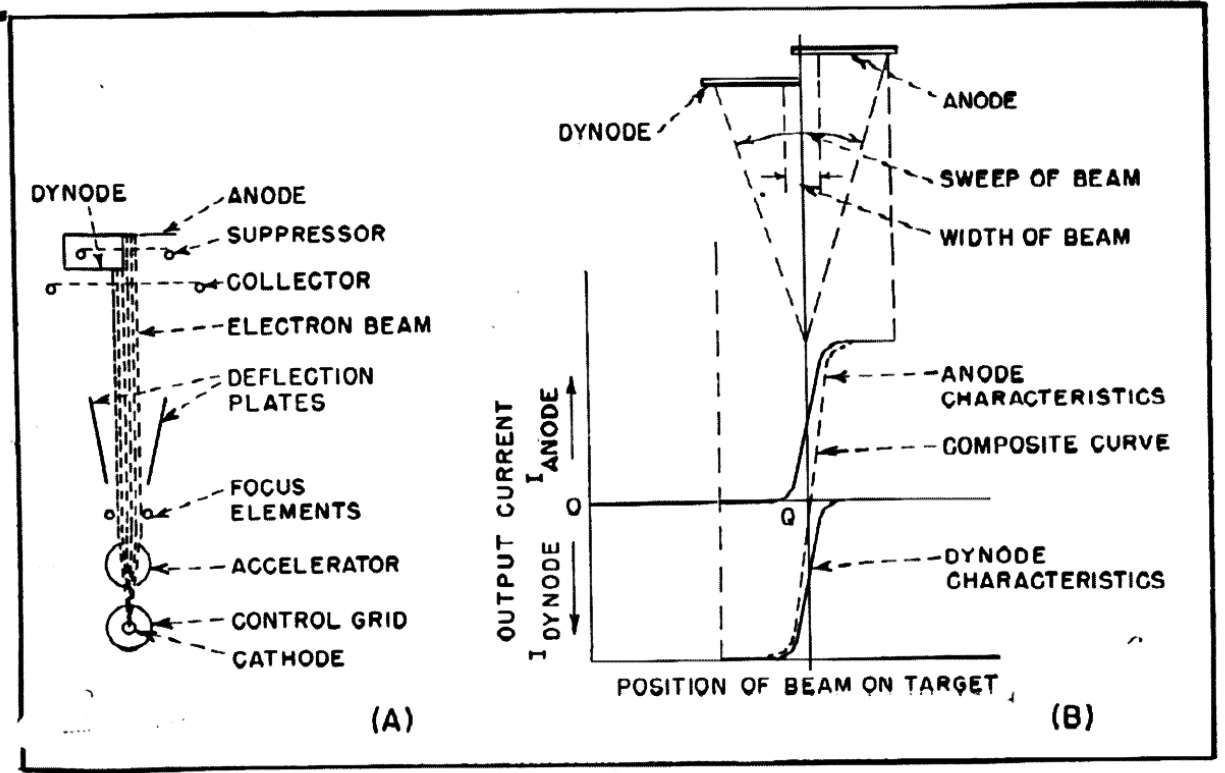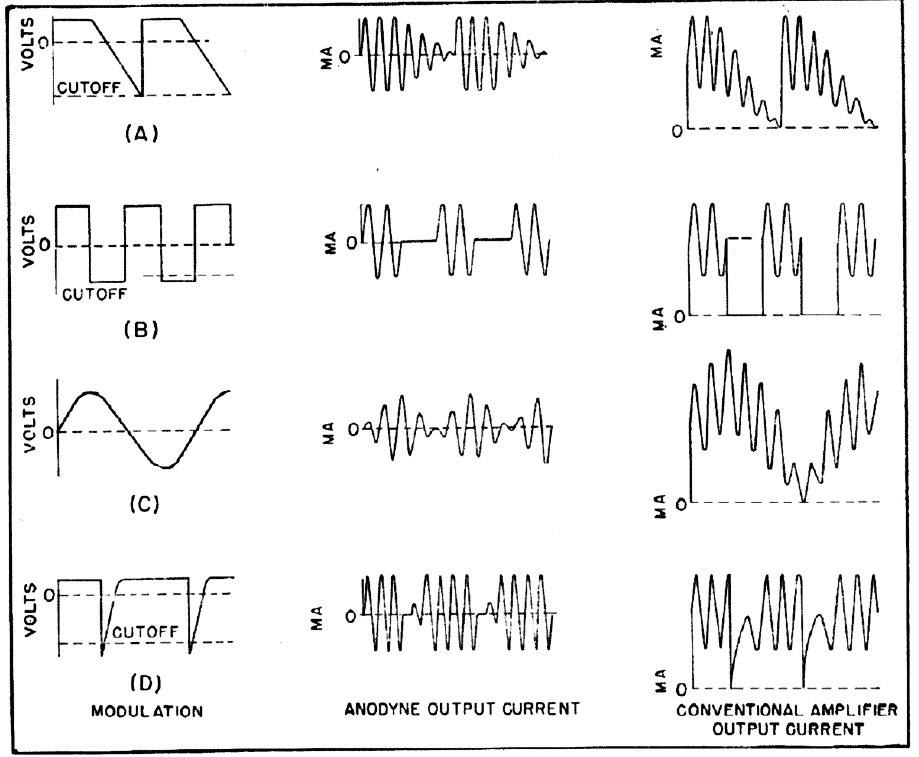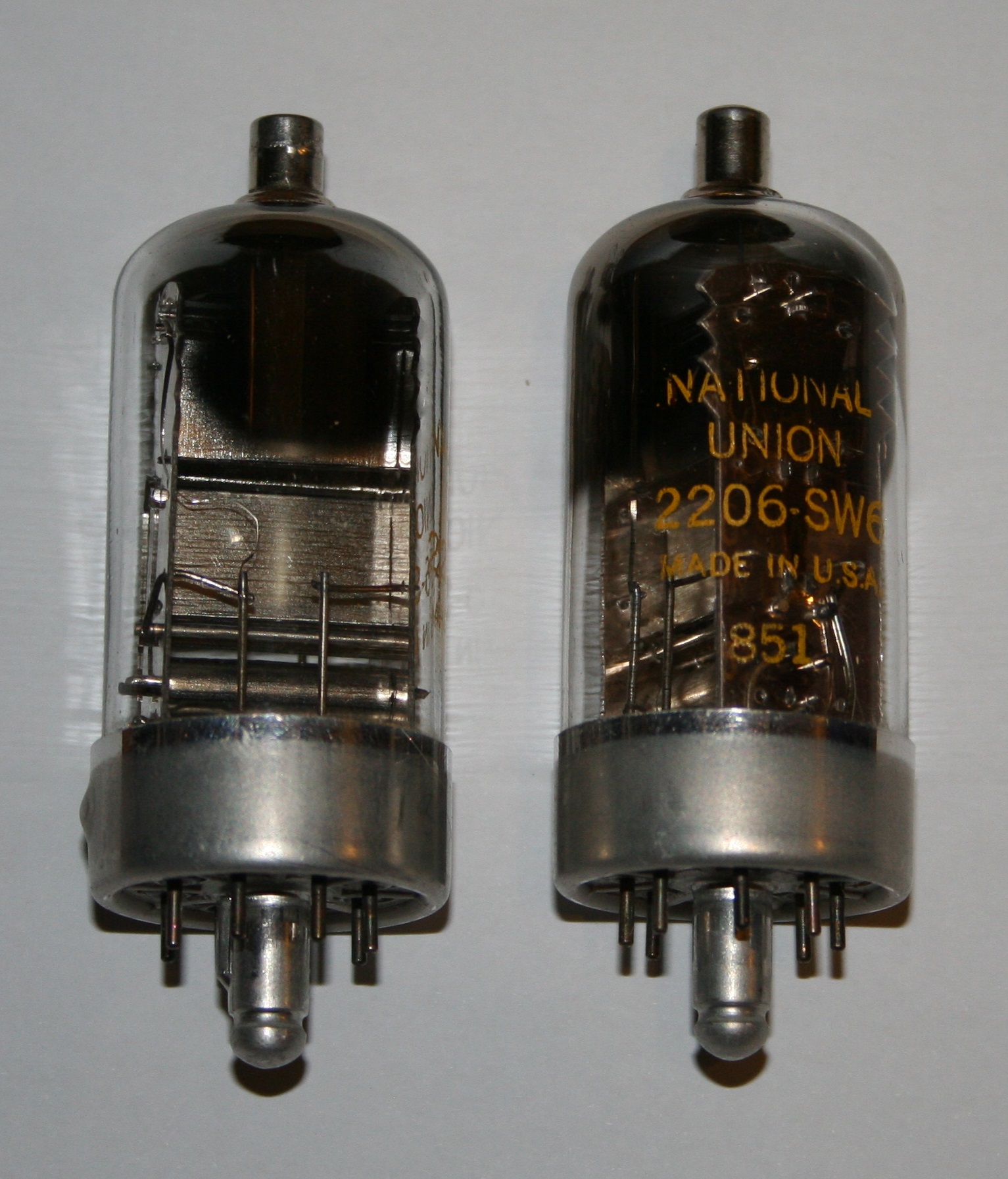
First printed in Tube Collector, February 2019, Volume 21, No. 1.
Reprinted here with kind permission from Danial Stocks
Weird Tube of the Month: National Union NU-2206-SW6 ‘Anodyne’ tube
Danial Stocks
The National Union NU-2206-SW6 tube is an interesting mix of technologies that results in a tube of some unique characteristics. It is a beam-deflection tube with secondary emission operation to boot.
The basic structure of the tube is similar to other types of beam deflection tubes: A long cathode embedded in a simple electron gun type structure is used to generate a wide, thin fan-shaped electron beam that is projected onto the anode. A pair of deflection plates is used to move the beam laterally across the anode surface. A feature unique to the Anodyne tube is the structure of the anode: Half the anode is a conventional anode, the other half is composed of secondary emissive dynode with an emission coefficient of approximately two. A suppressor mesh placed between the dynode and anode prevents secondary emission from the anode. A mesh collector electrode preceding the combined anode structure serves as an electron accelerator for the main beam in addition to collecting the secondary electrons from the dynode.
It is the special half-secondary-emitter anode structure that gives the tube some unique characteristics. With the beam centred on the anode, half the current will be collected by the normal anode section, the other half will impinge upon the secondary emission dynode side. With the secondary emission coefficient of approximately 2, the resulting secondary emission current is roughly equal to the total beam current impinging on the anode. The tube can be calibrated to adjust for variations in emissivity, ensuring a balanced zero point where the two currents exactly cancel.
Thus it can be seen that at the quiescent condition, the sum of beam and secondary emission currents cancel, resulting in zero overall anode current. As the beam is swept to the anode side, a conventional positive current results, and to the other side, the secondary emission exceeds the incoming beam current, resulting in a negative anode current.
This phenomenon gives some unique circuit opportunities. A Class A amplifier with zero quiescent current is possible. Additionally, as the beam current is a constant not defined by the anode conditions, the transconductance and plate resistance are comparatively constant over a large portion of the working region, giving better linearity than conventional gridded tubes.
More complex circuit functions are also greatly enhanced using the tube. As the beam current is controllable via a grid in the electron gun section, the overall transconductance of the tube may be varied, giving variable-mu operation with very good linearity.
Similarly, by simultaneous input of signals to both the deflectors and grid, balanced modulators may be produced that exceed the performance of conventional tubes in such a circuit. Most significant is that the quiescent condition is one of zero anode current – when driving the beam current to cutoff there is no DC offset condition or loss of linearity that occurs in other variable-mu or modulator circuits.
The tube can also function as a differential amplifier with very good common mode rejection. A voltage applied equally to both deflection electrodes does not change the anode current. Different voltages applied to each deflection electrode result in a beam deflection based on the difference of the two signals.
The combination of anode and dynode used to generate the output suggested the name Anodyne to describe the tube. The NU-2206-SW6 is the only type to have been seen, but there were apparently earlier versions leading up to the development of this type (SW1-5). The tube itself is built on a conventional Loctal base with top cap.
Despite the seemingly useful applications, the tube does not appear to have been produced in any quantity and is generally fairly rare. There may have been limiting factors such as decay of the secondary emission material or difficulties in manufacture. Anecdotal information on the internet suggests that no more than 50 or 100 pieces of the tube may have been manufactured.
Figure 1: internal construction of the Anodyne tube

Figure 2: Comparison of modulated output waveforms for the Anodyne tube vs conventional tube modulator

Photo of National Union Anodyne 2206-SW6 provided by Danial Stocks.

References
Anode-Dynode Beam Deflection Amplifier. Wolkstein, H.J.; Kaiser, A.W. Electronics p132. Aug 1955
https://www.radiomuseum.org/forum/anodyne_anodyne2.html#1